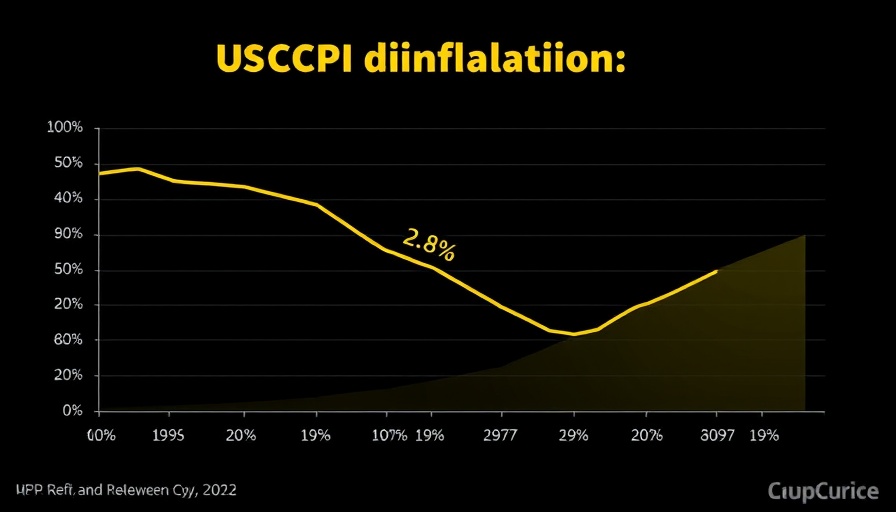
US Inflation Surprises with a Drop to 2.8%
In a remarkable turn of events, the inflation rate in the United States fell more than analysts predicted, dropping to 2.8% in February from 3% in January. This decline, reported by the US Bureau of Labor Statistics, is particularly noteworthy given that many experts anticipated a slight increase to around 2.9%. This unexpected decline suggests a more stable economic environment, potentially easing concerns over escalating prices that have plagued consumers and businesses alike.
Understanding the Consumer Price Index (CPI)
The Consumer Price Index (CPI) is a critical indicator reflecting the annual change in the prices of goods and services consumed. Following February's report, it became evident that month-to-month inflation increased by only 0.2%, showcasing a significant drop from January’s 0.5%. Moreover, the core CPI, which excludes fluctuating commodities like food and energy, rose by 3.1%, down from January’s 3.3%. This nuanced view allows economists to analyze underlying inflation trends without the noise created by volatile pricing in essential categories.
Market Reactions and Economic Implications
The immediate market response to this inflation data shift was pronounced, as the US Dollar Index saw fluctuations throughout the day. The dollar retreated from session highs shortly after the CPI figures were released. Economic watchers are particularly attentive to how such data influences the Federal Reserve's monetary policy. With signs of cooling inflation, discussions surrounding potential interest rate cuts are gaining traction.
Broader Economic Trends and Predictions
Experts predict that continued inflation moderation could lead to a cautious approach from the Fed, potentially easing the cost of borrowing for businesses and consumers. This opens doors for further investments, particularly in sectors like real estate and technology startups in the Bay Area. A sustainable dip in inflation might inspire confidence in spending and investment, which could be a game changer for local entrepreneurs and corporations. Those in the business sector should prepare for a wave of opportunities arising from lower interest rates.
The Backdrop of Inflation in the Current Economy
This drop in inflation comes amidst a backdrop of changes in consumer behavior and spending habits. Following the uncertainties brought on by the pandemic, many consumers have shifted their spending patterns. Businesses, particularly those in the tech industry, are adapting to these dynamics while focusing on growth strategies that emphasize sustainability and innovation.
What This Means for Bay Area Startups
Silicon Valley startups and Bay Area businesses stand to benefit significantly from the latest CPI data. As inflation decreases, venture capital funding is likely to increase, encouraging startups to pursue new projects without fear of crippling interest rates. Additionally, with a rise in consumer spending anticipated, businesses can leverage this optimism for expansion and innovation.
Conclusion and Looking Ahead
In summary, the recent drop in US inflation to 2.8% in February carries implications that extend far beyond economics; it resonates deeply within the Bay Area economy and the larger world of business. Lower inflation could foster better conditions not just for business growth, but also for sustainable practices, further intertwining economic health with social responsibility. As we monitor these trends closely, individuals and companies alike should consider their strategies in response to this evolving economic landscape.
Understanding and adapting to these economic shifts will empower businesses and entrepreneurs to make informed decisions, seize new opportunities, and navigate through the intricate layers of our current business environment effectively.
 Add Row
Add Row  Add
Add 



Write A Comment